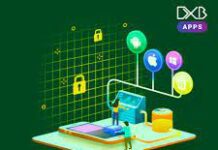In today’s digital age, educational institutions are constantly seeking ways to enhance efficiency and effectiveness in their operations. Learning Management Systems (LMS) have emerged as invaluable tools for streamlining educational processes, empowering educators, and improving student outcomes. In this beginner’s guide, we’ll explore how LMS redefines efficiency in education.
-
Understanding Learning Management Systems (LMS): Learning Management Systems (LMS) are software platforms designed to facilitate the creation, delivery, and management of educational content and resources. These platforms provide educators with tools to organize course materials, deliver instruction, track student progress, and facilitate communication with students.
-
Centralized Course Management: One of the key benefits of LMS is centralized course management. Educators can create and organize course materials, assignments, quizzes, and other resources within a single platform. This centralized approach streamlines the organization of course content, making it easier for educators to manage and update materials as needed.
-
Automated Administrative Tasks: LMS automate various administrative tasks, such as enrollment, grading, and attendance tracking. Educators can set up automated workflows to handle routine tasks, reducing the time and effort required for manual administration. This automation frees up educators to focus on delivering quality instruction and supporting student learning.
-
Personalized Learning Experiences: LMS enable educators to personalize learning experiences for individual students based on their needs, interests, and learning styles. Educators can create customized learning paths, provide targeted feedback, and recommend supplementary resources to support student learning. Personalization enhances student engagement and comprehension, leading to improved outcomes.
-
Enhanced Collaboration and Communication: LMS facilitate collaboration and communication between educators and students. Through discussion forums, messaging features, and online collaboration tools, educators can interact with students in real-time, answer questions, and provide support outside of traditional classroom hours. This enhanced communication fosters a collaborative learning environment and strengthens the teacher-student relationship.
-
Access to Rich Multimedia Content: LMS provide access to a wide range of multimedia content, including videos, interactive simulations, podcasts, and e-books. Educators can incorporate multimedia resources into their lessons to enhance engagement and comprehension. Students benefit from access to diverse learning materials that cater to different learning styles and preferences.
-
Real-Time Progress Tracking: LMS offer real-time progress tracking and analytics features that allow educators to monitor student performance and engagement. Educators can track student participation, completion rates, quiz scores, and other metrics to assess learning outcomes and identify areas for improvement. Real-time feedback enables educators to intervene and provide support when needed.
-
Scalability and Flexibility: LMS are scalable and flexible, allowing educational institutions to adapt to changing needs and scale operations as needed. Whether serving a small classroom or a large institution, LMS can accommodate varying numbers of students, courses, and users. Additionally, LMS can be accessed from anywhere with an internet connection, providing flexibility for both educators and students.
Conclusion: In conclusion, Learning Management Systems (LMS) redefine efficiency in education by centralizing course management, automating administrative tasks, personalizing learning experiences, enhancing collaboration and communication, providing access to rich multimedia content, enabling real-time progress tracking, and offering scalability and flexibility. By leveraging the power of LMS, educational institutions can streamline processes, empower educators, and improve student outcomes in today’s digital learning landscape.






